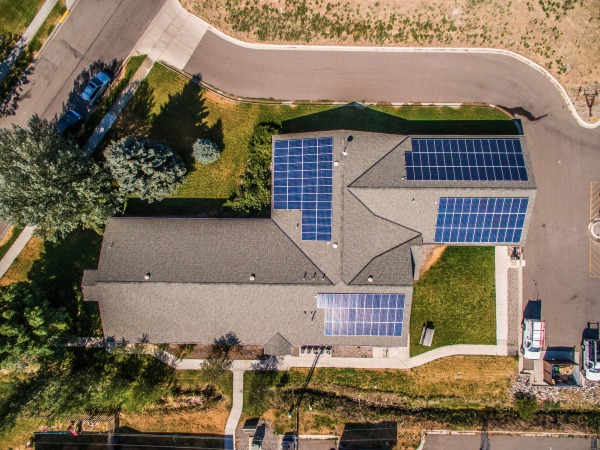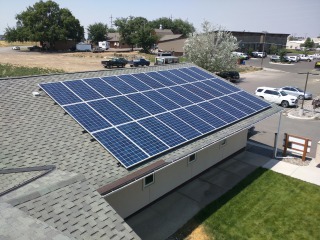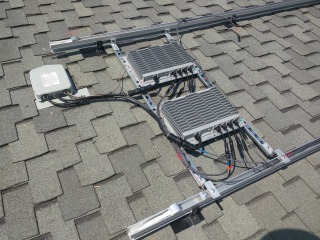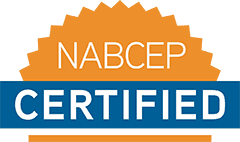Haug Professional Building
Projects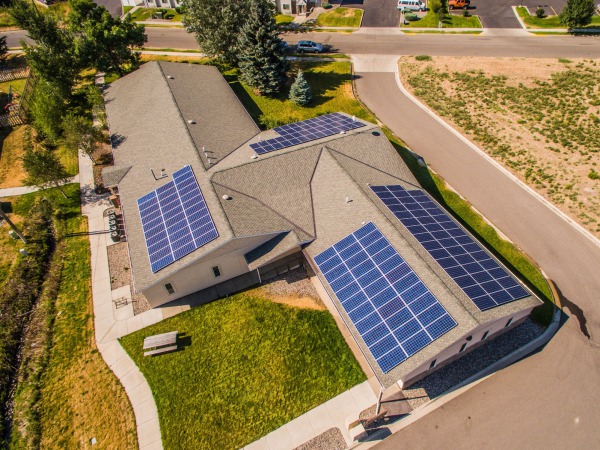
For commercial buildings with more-than-ample roof space available, 72-cell solar modules with silver frames are a cost-effective choice as they reduce racking costs by fitting more cells into a single module than 60-cell modules more commonly used for residential installs. This also keeps the production cost (per-watt) of the module itself down as well, minimizing the amount of aluminum required to house the cells. As the dimension from the ridge to the eve of each roof surface worked well with these larger modules, it was the obvious choice.
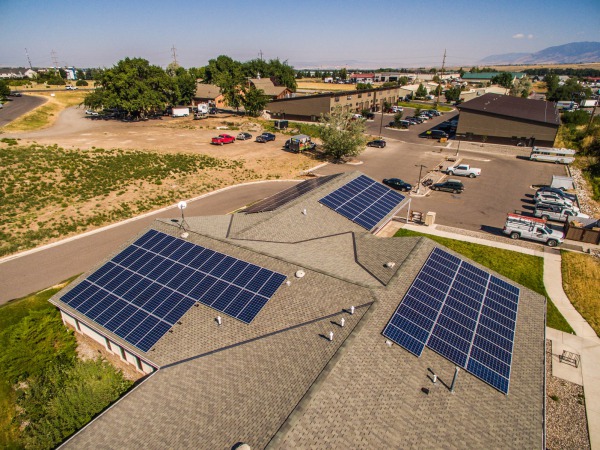
Client Profile
The owner of the Haug Professional Building came to OnSite Energy in the winter of 2017, interested to see the how the numbers penciled out for solar as a corporate financial investment. What he found was that by installing this 50 kW solar system, he could save between $100,000-$200,000 over it's 25-year life! As a farmer by trade and an overall conservationist, the added benefit of avoiding the equivalent carbon dioxide emissions from 1,230,645 pounds of burned coal over 25 years made the opportunity too good to be true.
The Haug Professional Buidling 50 kW Solar Array
INSTALLED2017
POWER50 kW
PRODUCTIONEstimated Annual 60,456 kWh
Energy Offset100%
PANELSHanWha QCells 330-Watt Polycrystalline Panels x151
INVERTEROutback Pro Harvest 3-Phase Inverters x7
MOUNTSnapNrack Series 100
WARRANTY12 Year Product Warranty, 25 Year Power Warranty
The Design/Build
For commercial buildings with more-than-ample roof space available, 72-cell solar modules with silver frames are a cost-effective choice as they reduce racking costs by fitting more cells into a single module than 60-cell modules more commonly used for residential installs. This also keeps the production cost (per-watt) of the module itself down as well, minimizing the amount of aluminum required to house the cells. As the dimension from the ridge to the eve of each roof surface worked well with these larger modules, it was the obvious choice.
Perhaps the most unique feature of this system design is the adoption of the Outback ProHarvest inverter system. Like microinverters, the ProHarvest inverters mount beneath the solar array, saving all of that space on a vertical wall at ground level. But unlike microinverters, they do not convert the DC power of an individual solar module to AC power- rather they convert the DC to AC for an entire source circuit of solar modules, just like a conventional string inverter. In fact, the Outback ProHarvest 5.75 kW inverter is the only 208-volt, 3-phase inverter on the market that can be supplied with 1000-volt DC source circuits- all others are capped at 600 volts. The benefit of this is wiring more modules in series per circuit, minimizing the total number of circuits in the array, which saves time, materials, and labor. Lastly, the location of these inverters makes the entire system compliant with the new 'rapid shutdown' requirements of the national fire code, and without added costly devices required by conventional inverters. The result is a cost-effective inverter system with a 98.6% efficiency rating!
Unique Challenges
The main challenges of this project were simply to adopt a practical, yet efficient design to the multiple roof surfaces of the building, while designing around a market-disruptive inverter system that looks and feels like a micro inverter, but behaves like a conventional string inverter! Typically a solar array that faces east or west produces about 20% less energy per kiloWatt installed than it would if it were facing south, but with that in account we were still able to install a system capable of zeroing out the electricity bill there.Financial Elements
This project was awarded a 25% grant from the USDA REAP program- a must for all for-profit entities pursuing solar in communities with populations fewer than 50,000 people. The program funding comes through the federal 'Farm Bill' that is voted on each year in congress.The owner was also able to utilize a 30% federal tax credit for the system, and will be able to utilize the depreciation savings for 85% of the project cost over the MACRS 6-year schedule.
Lastly, though the solar cells are expected to degrade about 1/2% annually, that is outweighed by the 2% national average for annual utility rate escalation. In short, the financial value of the energy produced by the system will be worth close to 40% more 25 years from now!

Each of the roof areas has its own dedicated inverter(s)

